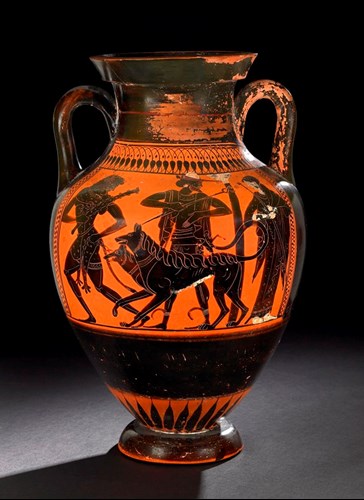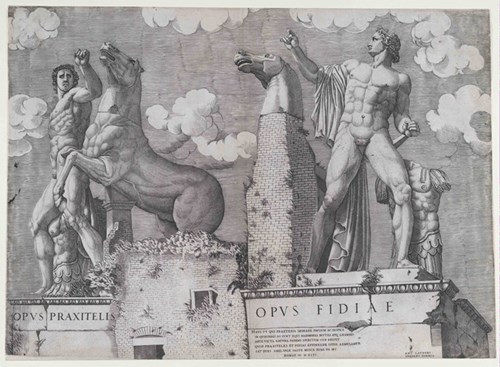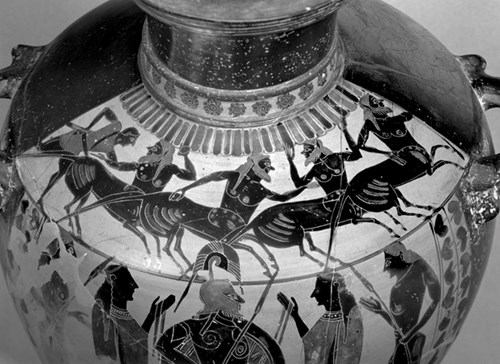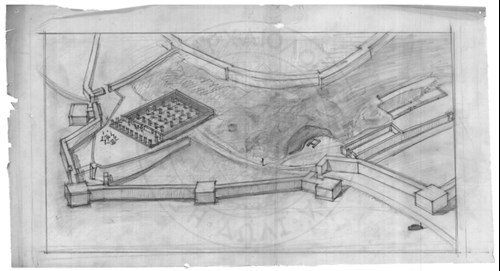The Lesser Mysteries
The Lesser Mysteries was a religious celebration held in the month of Anthesterion (February-March) at the sanctuary of Demeter and Kore in Agra. According to the mythological tradition, the festival was established to initiate into the Mysteries Heracles (who was passing from Athens on his way to the Underworld to bring back Cerberus) and the twins Castor and Pollux. However, the Mysteries were open only to the Athenians at that time.


The solution was provided by Eumolpus, who considered it the highest honour for the Mysteries to include such eminent heroes as initiates. The three foreigners were declared Athenian citizens and participated in a new celebration established and adapted to their needs, the Lesser Mysteries. According to an alternative interpretation, Heracles was forced to seek purification due to the murder of the Centaurs and the goddess Demeter founded the Lesser Mysteries to absolve the hero.

Agra (or Agrai) was a leafy suburb of Athens, outside the city walls, on the left bank of the river Ilissos. The Athenians founded many sanctuaries in this area, including those dedicated to Artemis Agrotera, Zeus Meilichius, Eileithyia, Pan, and Poseidon Heliconius. However, the most famous sanctuary was dedicated to Demeter and Kore and served as the leading site for the celebration of the Lesser Mysteries.

As the myth of Heracles suggests, the Lesser Mysteries must have been originally designed to prepare believers who were not Athenian citizens and wanted to be initiated into the Greater Mysteries. However, at the beginning of the sixth century, their character began to change to respond to the growing pressure created by the festival’s popularity. At that time, the Athenians decided to increase the prestige and nature of the Mysteries with the construction of the imposing Telesterion of Peisistratos and the founding of the City Eleusinion at the foot of the Acropolis. A large number of prospective initiates forced the Eleusinian priesthood to break the initiation process into two phases: the Lesser Mysteries became a kind of preliminary initiation, while the actual initiation took place later during the celebration of the Greater Mysteries.
Bibliography
Cosmopoulos, Michael. Bronze Age Eleusis and the Origins of the Eleusinian Mysteries, Cambridge: Cambridge University Press, 2015.
Graninger, Denver. Cult and Koinon in Hellenistic Thessaly, Leiden: Brill, 2011.
Simms, Robert. “Agra and Agrai”, Greek, Roman, and Byzantine Studies, 43, 3 (2002/2003), pp. 219-229.
Spence, Lewis. The Mysteries of Egypt: the secret rites and traditions of the Nile, New York: Cosimo Classics, 2007.
Wright, Dudley. The Eleusinian Mysteries and Rites, London: Theosophical Publishing House, 1919.
Cover Image source: Aikaterini Laskaridis Foundation / Otto Magnus von Stackelberg (1854): Landscape with Ilissus river.
1st Image source: The British Museum /The Eucharides Painter (490 BCE): Herakles fetching Kerberos from Hades.
2nd Image source: The British Museum / The Painter of Louvre F6 (c. 570-550 BCE): Heracles pursuing four Centaurs.
3rd Image source: The Metropolitan Museum / Anonymous (1546): Statues of the Dioscuri at the Quirinal, Rome.
4th Image source: The Archaeological Society at Athens / Ioannis Travlos Archive / The Peisistratid Telesterion in Eleusis.


